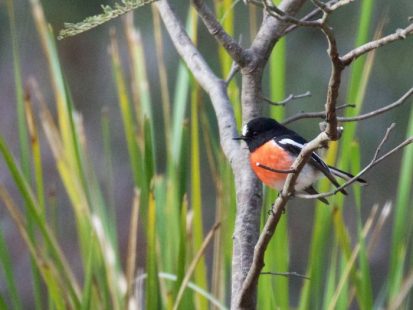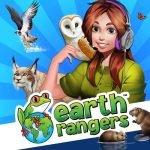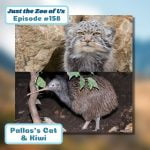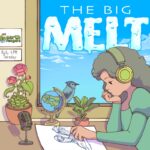
Dawn chorus in the mountains
Leave a reviewNo music, no voices, just the sound of a valley halfway up a Tasmanian mountain. This soundscape is full of birds and breeze echoing backwards and forwards across a reservoir. Kunyani is swirled with mist and the city of Hobart spreads below, in miniature, on a still, early morning.
© Australian Broadcasting Corporation | 01:30:05
|
Full episode description
 Episode One: Calm, flowing creek with night-time frog calls
Episode One: Calm, flowing creek with night-time frog calls
This is an Episodic show. You can listen to it in any order, but episode one is always a great place to start.Full Episode description
No music, no voices, just the sound of a valley halfway up a Tasmanian mountain. This soundscape is full of birds and breeze echoing backwards and forwards across a reservoir. Kunyani is swirled with mist and the city of Hobart spreads below, in miniature, on a still, early morning.
We’re halfway up the mountain, at the Hobart Waterworks Reserve where two huge reservoirs store water for use by the populace below. The deep valley where the reservoirs are situated means there is an echoey, dream-like quality to all the sound. You can hear a unique mix of forest and water birds at this place every single morning.
There were tawny frogmouths coming as I trudged up the hill, and as I was sitting listening to the day unfold a scarlet robin danced on the edge of the bush — feeding, patrolling and, just maybe, calling for the microphone.
Listening notes from Ann Jones:
06:06 A fan-tailed cuckoo calls, making a trilling, descending whistle, quavering slightly as it goes. This cuckoo is a parasitic breeder, sneakily laying its eggs into another bird’s nest. The fan-tailed cuckoo in particular targets tiny birds, like scrubwrens, to bring up its offspring.
07:10 Kookaburras are not native to Tasmania, but were introduced in the early 20th century and are established.
12:51 The ploinking call is probably part of the call repertoire of the grey shrikethrush.
13:38 A single call of a green rosella. This bird is only found in Tasmania and is Australia’s largest rosella.
14:10 The repetitive notes of the striated pardalote, calling in almost perfectly timed beats.
19:52 The deep oooom of a bronzewing pigeon calling from the bushland. Often heard, rarely seen!
23:15 The kelp gulls, normally associated with the seaside, love to visit the reservoir. You can hear their calls echoing over the water and around the hills. They look like a big, beefy seagull with a black cape on, a bright yellow beak with a spot of red lipstick.
25:10 The footsteps of a jogger running past the microphone.
37:14 European blackbirds are singing throughout much of this recording. Released into Australia and well established in the colder areas, these songsters fill the air with a distinctive song. Think the beginning of Blackbird by The Beatles — it is, literally, a blackbird recording. Here they’re interspersed with native Australian birds, but it’s the one that sounds like an old man whistling an unknown tune.
38:20 Listen for the flight calls of the green rosellas.
40:10 Behind the grey shrikethrush and the blackbird, there are tiny chirps and a sequence of extremely high-pitched twitters, like a sea shanty sung in super-fast motion. This is the grey fantail, who will be flitting and flying through the dappled sunlight catching insects on the wing.
41:07 This slightly grumpy sounding quack is probably a pacific black duck.
49:32 The grey shrikethrush sings with clarity and force, and all across Australia its call varies slightly.
55:30 The kookaburras are still solidifying the boundaries of their territories and their relationships by singing choruses across the other side of the reservoir.
56:36 A coot doing its harmonic squawk.
1:15:34 The alarm call of the blackbird, who has momentarily stopped singing to warn of danger.
1:24:18 You can hear a masked lapwing become upset and take off, calling and swirling in the air.
1:28:34 A short interlude from distant ravens. These are forest ravens, the only sort that can be found in Tasmania.
1:29:15 A duck is chattering away in the background. I think it’s a wood duck! Quack!
© Australian Broadcasting Corporationbop| Status: Active, 17 episodes | Kind: Episodic | Episode URL
The content, Artwork and advertising within this podcast is not owned or affiliated with Sound Carrot and remain the property of their respective owners.

![The Seed Treasure Map [UPDATE!] The Seed Treasure Map [UPDATE!] episode logo](https://soundcarrot.com/wp-content/uploads/2022/09/12170416-1652403735060-4821ddfdab94b-150x150.jpg)






